Society

People of Dhaka have been fortunate enough to enjoy the good air in the last ten days of July, 2021 due to mainly three reasons, 1st one was lockdown, 2nd one was the Eid holiday and 3rd one was monsoon rain. This week had been a magical week considering the air quality history of Dhaka city. Dhaka has been at the forefront of polluted air for several years now. According to the latest report released by IQAir, an international organization based in the United States, Bangladesh is at the top position in terms of air pollution in 2019 and 2020. This report also mentions that Dhaka got the second position in terms of air pollution among the capital cities of the world. The report further states that in 2020, the average amount of (Particulate Metter) PM2.5 in the air of Bangladesh was 77.1 micrograms per cubic meter (µg/m3) per year which is 5.5 times higher than the National Ambient Air Quality Standard (NAAQS) level. The (annual) standard set by the Department of Environment (DoE) for PM2.5 was 15 micrograms per cubic meter. The National Ambient Air Quality Standard of Bangladesh in 24 hours (PM2.5) has been fixed at 65 micrograms per cubic meter of air. If it existed, that air can be considered clean air. The standard is based on the amount of PM2.5 per cubic meter of air that is harmful to the human body. Another report mentions that, in 2016, about 1 lakh 53 thousand people died due to air pollution in Bangladesh. Center for Atmospheric Pollution Studies (CAPS), Stamford University found that in January 2021, about 2,500 (two and a half thousand) metric tons of dust was blown into Dhaka's air every day, one-fifth of which was about 500 metric tons of dust is deposited on the tree leaves. But in ongoing COVID-19 lockdown period gradually the capital city of Bangladesh has started coming out of that place. At present, Dhaka is ranked 77th on the list of polluted cities in the world. This image was seen on July 30th in the IQAir. As such, the people of the capital got fresh air in the recently departed July. Because, in July, the average air quality in Dhaka was only 31.31 micrograms per cubic meter.
Causes and sources of air pollution in Dhaka
Air pollution can cause by natural and manmade reason. Among all the natural causes of air pollution, weather and geographical factors are significant. Within the man-made causes three main reasons are deficiencies in urban planning, weakness of the law and limited law enforcement. According to a recent study conducted by the Center for Atmospheric Pollution Study (CAPS), most of air pollution comes from unplanned and uncontrolled road digging and construction work (30%) in Dhaka city. Other sources of air pollution included brick kilns and factories (29%), vehicle black smoke (15%), Transboundary air pollution (10%) and household and cooking stove pollutants (9%), and waste incineration (7%).
The relationship between air pollution and health damage
A study conducted by the Center for Atmospheric Pollution Studies (CAPS) at Stamford University in Bangladesh found that the amount of small particulate matter in the air of Dhaka city is about 80% of the total particulate matter which is one of the causes of very alarming lung disease. These pollutants cause various diseases such as lung cancer, asthma, bronchitis, tuberculosis, kidney disease, hypertension, birth defects, effects on mental health, heart attack, liver problems, respiratory distress, effects on pregnant mothers, skin diseases, and pneumonia. According to the Health Effects Institute, a US-based research organization, 1,22,400 people die every year in Bangladesh due to air pollution. According to the World Bank's 2017 report, 46,000 people die every year in Bangladesh due to air pollution. Report also noted that almost 10,000 people die every year in Dhaka due to air pollution. UNICEF further mentioned that, 30 million children in the world live in areas which is surrounded by polluted air, of which 22 million live in South Asia. Moreover, 7 lakh children under the age of 5 die every year due to air pollution. Children and the elderly are more likely to be affected by the air pollution because human immunity is reduced at this stage of life, which makes them less vulnerable. On the other hand, as the lungs of young children do not become like those of adults, the effects of air pollution are greater on them. In addition, babies do not have hair follicles on the inside of their noses, so dust-rich air can easily reach their airways.
Air pollution in Dhaka city
The Stamford University's Center for Atmospheric Pollution Study (CAPS) has scientifically reviewed the presence of PM2.5 in the air in 2020 to monitor air quality in 70 places in Dhaka city based on land use. As part of the study, air quality in 10 sensitive area, 20 residential area, 15 commercial area, 20 mixed area and 5 industrial areas of Dhaka city was monitored. Overall, it can be seen that in 2020, the average PM2.5 of 70 places in Dhaka city was 335.4 micrograms per cubic meter which is 5.2 times higher than the NAAQS level. The National Ambient Air Quality Standard (daily) set by the Department of Environment for PM2.5 is 65 micrograms per cubic meter. According to a monitoring report by the US Embassy in Dhaka, the amount of air pollution increased 10.1 percent in December 2020 compared to 2019.
Another very recent study has conducted by Center for Atmospheric Pollution Studies (CAPS), Department of Environmental Science, Stamford University Bangladesh under USAID and FCDO funded Anti-Pollution Advocacy Project where daily air and noise data were collected from 10 important places in Dhaka city. After analysed the data we found that in the month of April the average maximum PM2.5 was found to be 92.6 micrograms per cubic meter in the Shahbagh area and the minimum was 6.02 micrograms per cubic meter in the Agargaon area. Also, in the month of May the average PM2.5 was found to be 120.56 micrograms per cubic meter in the Shahbagh area and the minimum was 53.30 micrograms per cubic meter in the Dhanmondi-32 area and finally the maximum average PM2.5 in June was found to be 69.35 micrograms per cubic meter in the Ahsan Manzil area and the minimum was 35.22 micrograms per cubic meter in the Shahbagh area. Moreover, in the month of July the average PM2.5 was found to be 53.46 micrograms per cubic meter in the Gulshan-2 area and the average minimum PM2.5 was 16.89 micrograms per cubic meter in the Motijheel area. This study started from April 2021 and will continue till April 2022.
Air pollution during Eid in the last 6 years
Air Quality Index (AQI) data from the last 8 years (2016-2021) of Air Visual Monitoring by AirVisual, a US-based international organization that monitors global air pollution, for a total of 50 days (10 days for two Eid's and 40 days before and after Eid) analysed by Center for Atmospheric Pollution Studies (CAPS) Stamford University Bangladesh. This study shows that out of 50 days, the people of Dhaka consume only 6 days (AQI (0-50)) of good air. In 2017, two days after Eid-ul-Fitr, the AQI was 42 and 36, and in 2019 next day after Eid-ul-Fitr, the AQI was 37 and two days after Eid-ul-Azha, the AQI was 49 and 22, and in 2021, one day after Eid-ul-Azhar it was 44 respectively. On the other hand, 33 days out of these 50 days, the people of Dhaka consume moderate (51-100) air. However, within 50 days, Dhaka's AQI remained unhealthy for the sensitive group for only 11 days. During the last 6 years of Eid, the average AQI was found 91 for 10 days in 2016, it was 63 for 10 days in 2017, it was129 for 5 days in 2018, it was 68 for 10 days in 2019, it was 63 for 5 days in 2020 and it was 93 for 10 days in 2021). Every year on the day of Eid and for a few days after Eid, public transport on various routes in Dhaka city is closed, most people use rickshaws or their transport to travel and many people leave Dhaka city and go to villages during Eid holidays, resulting in less movement which may be the cause air pollution during this time. Also, Eid-ul-Fitr and Eid-ul-Azha of the last 6 years have been celebrated during the monsoon season. Therefore, the amount of air pollution during Eid has been observed to be low due to the closure of public transport, reduced human movement and high rainfall during the monsoon season. Although the study conducted on only Dhaka city by the Center for Atmospheric Pollution Studies (CAPS), but it can be assumed that the air quality in other parts of the country has also improved.
Reasons for magical reduction of air pollution in July 2021
According to a survey by the Center for Atmospheric Pollution (CAPS), uncontrolled road digging, unfit vehicles and large megaprojects are main the sources of air pollution in Dhaka city. Dhaka city emits a variety of air pollutants from these sources, one of which is microscopic particles the size of 2.5 microns or less. It is also known as PM2.5. Precipitation is one of the factors that can reduce the amount of particulate matter in the air by 2.5. In 2021, the day of Eid-ul-Azha (July 21) in Dhaka city with a continuous 11 hours (8 am to 5 pm) for a total of 13 hours, the AQI was below 50 whereas, in 2020, Eid-ul-Azha only 4 hours the AQI was good. As of 24 hours in 2021, the AQI on 21st July was 96, which was 56 on 22nd July, 44 on 23rd July and 29 on 24th July. This year, before the Eid-ul-Azha, on the day of Eid and after, it rains in Dhaka, which reduces the amount of PM2.5 in Dhaka city. On the other hand, the number of people heading to Dhaka due to the lockdown in the prevention of coronavirus infection is relatively low. Due to this the lack of movement of vehicles can be noticed, as a result, air pollution in Dhaka is decreasing. Many people gone to home after Eid due to the lockdown announcement. The total population of the Dhaka Metropolitan area is 2 crore 17 lakhs. About 1 crore and more people have left Dhaka this Eid but only 30 lakhs have returned so per. In other words, because of various activities of the total population in Dhaka city, such as the traffic was less. Factories, construction work or development work were closed at that time. As a result, air pollution is relatively low. Although the major projects were running at a slower pace than usual during this time of lockdown, the number of people and vehicles moving through the project area was less and the spread of pollutants from the source was less, resulting in improved air quality. The third major source of air pollution is unfit vehicles and severe traffic jams. Looking at the current picture of Dhaka, it is understood that the number of vehicles on the road is less and the amount of pollution is much less. There is also the effect of clean air on human visibility. According to the Meteorological Department, where people seen normally 2 to 4 km away things in Dhaka now 8 to 9 km away things are seen at this time.
Lessons from the present situation and Future plans
The current improvement in Dhaka's air quality in the COVID-19 situation is only temporary, in no way sustainable or permanent solution. This is just a positive manifestation of a particular disaster situation. But it also shows us what the main sources of air pollution are and taught how to control air pollution. Also taught us what are the benefits of preventing air pollution.
Therefore, with the improvement of the Corona situation, we must adopt the plan and determination to build a habitable Dhaka city in the future by using this experience as a means of identifying the sources and not forgetting the present condition of the air pollution free Dhaka city. And for this the following issues can be seriously considered: For personal protection, it is necessary to use an advanced mask along with cleanliness, Separate plans for prevention of dry season air pollution, strict control of expired and unfit vehicles, the compulsory introduction of bicycle lanes, odd-even driving on different days of the week, discouragement of private vehicles, encourage public transport, ensure good mechanical ventilation inside the house, Encourage roof gardens to increase green cover and reduce city temperature, conserve reservoirs, install high-tech brick kilns, gradually increase the use of blocks as an alternative to burnt bricks, develop and renovate service facilities in a minimum and timely manner. construction materials should be covered during transportation, repair work should be completed through coordination, suction trucks can be used to collect road dust, Cooking fuel stoves in slum areas need to start using advanced technology, waste disposal should be stopped everywhere, advanced technology incinerators should be used in waste management and energy can be generated from waste and further research on inland air pollution, In Public Service Commission (BCS) needs to include environmental cadres, The Clean Air Act 2019 needs to be implemented as soon as possible and development activities need to be coordinated through the introduction of city governance.
Conclusion
Although the air pollution situation in Dhaka is improving, it is only temporary. The ongoing lockdown in Dhaka will be lifted as soon as the coronavirus comes under control. Numerous students, workers, and businessmen will join the workplace. As a result of coronavirus, various serious economic, social, political, mental health, educational and environmental crises are imminent in Bangladesh as well as all over the world. As a result, on the one hand, some people in the city who have lost their jobs will be forced to flee to the villages, on the other hand, innumerable temporary workers will leave the villages and flock to Dhaka in groups in the hope of earning an income. Dhaka will get back that old image of dust, traffic jams, and pollution. Learning from this situation in Corona requires sincere planning and determination of people to save lives and nature. If air pollution is prevented, we can leave a liveable city for the next generation. This will increase the average life expectancy by more than a year. It can play a role in preventing climate change. People will be able to stay largely free from diseases. People's medical expenses will be reduced. Work capacity and working hours will increase. People's financial well-being will increase. Prosperity will come in GDP. We do not have to wait for an unexpected epidemic to improve air quality, one day Dhaka will rise to the top of the list of liveable cities in the world. However, in this case, it is not possible to say for sure that the general holiday and lockdown is the only reason for this improvement in Dhaka's air quality. Here the special effects of meteorological parameters such as temperature, rainfall, and humidity can be noticed.
Professor Dr. Ahmad Kamruzzaman Majumder, Dean, Faculty of Science,Chairman, Department of Environmental Science, Stamford University Bangladesh, Founder and Director, Center for Atmospheric Pollution Studies (CAPS) and Joint Secretary, Bangladesh Poribesh Andolon (BAPA). E-mail: dk@stamforduniversity.edu.bd



















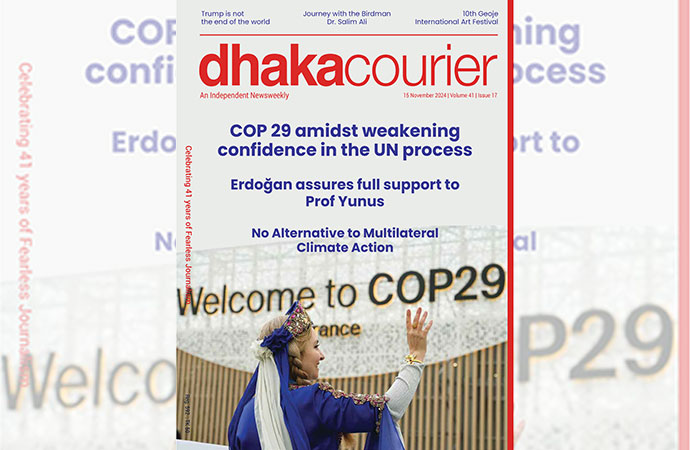
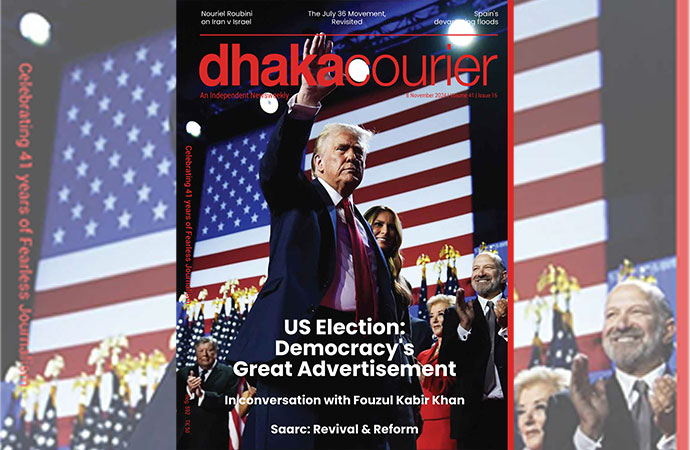
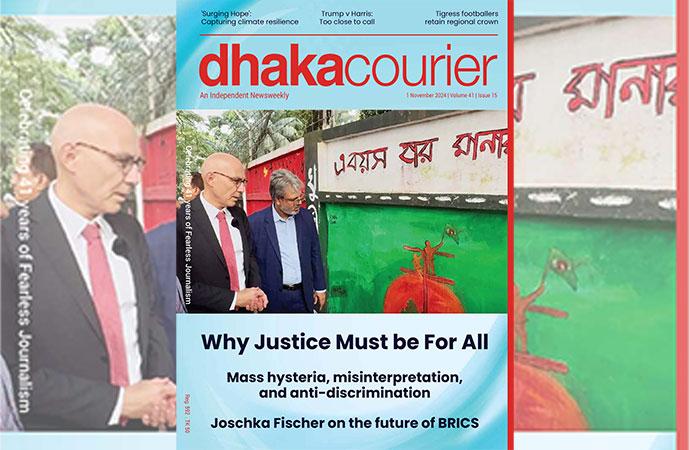
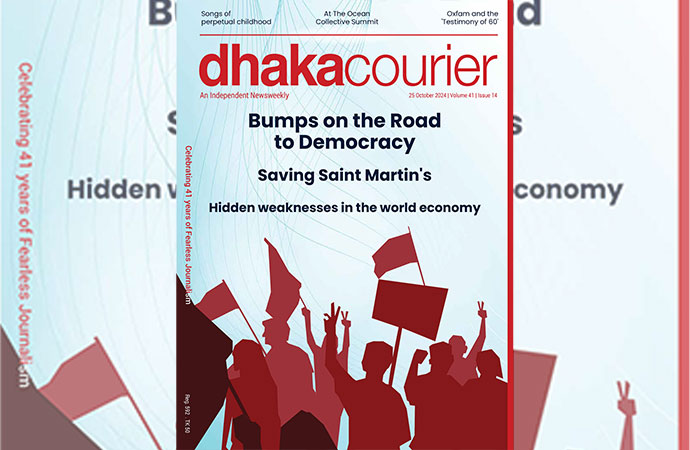
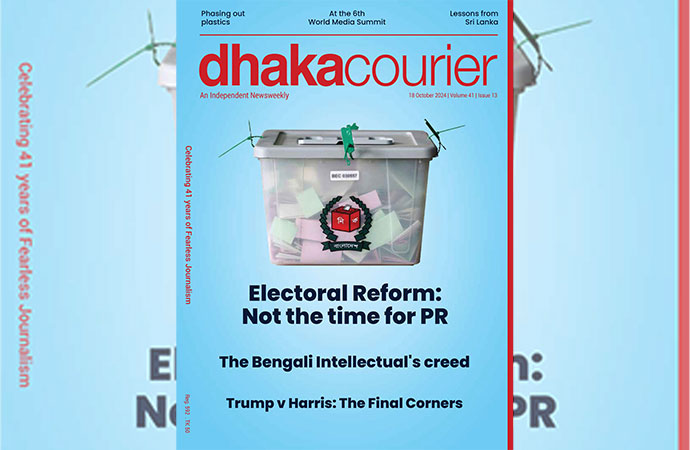
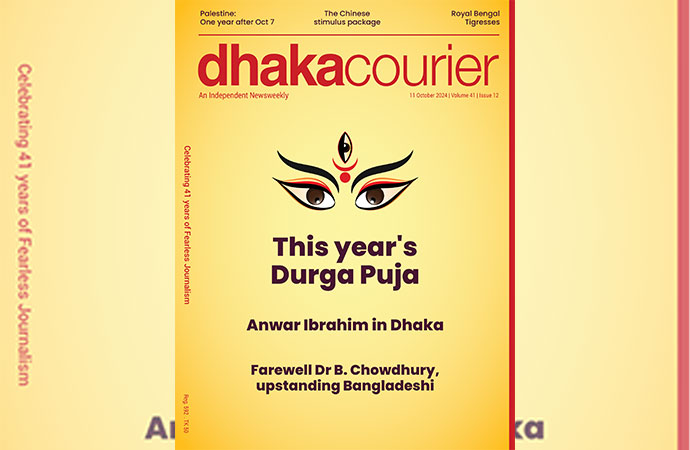
Leave a Comment
Recent Posts
Unity to tackle climate change ...
There is no doubt that climate change is occurring and has the potenti ...
Mismanagement and overcrowding ...
Dhaka Medical College Hospital (DMCH), one of Bangladesh’s large ...
Remarkable achievement for Bangladeshi artists at th ..
We need new economic framework that serves planet, p ..
Prof Yunus calls for mobilising "intellectual, finan ..
Bangladesh, India, Nepal, Bhutan should think of cre ..